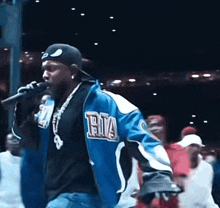Trigger Warning: War, Killing, Death are topics discussed
As political issues continue to clash between the two countries, a new type of hatred initiates Pakistan and India's animosity.
With increasing radical opinions on ownership of specific locations, a trade-off must occur between country pride and citizens' safety. As tensions rise, more and more citizens can be potentially affected by these randomized attacks. Why are these border-wars occurring in the first place? With the answer not being one-sided, we hope this article can provide some perspective and information about these powerful skirmishes.
Let us slide into your dms 🥰
Get notified of top trending articles like this one every week! (we won't spam you)1947: The Fight over Jammu
Jammu is a city in the very north section of India that lies on the countries border. After India was released from British control, the country split into two parts. India and Pakistan.
The areas were divided based on the religious majorities that resided there. Northern India became Pakistan because of its Muslim Population. Many arguments regarding the ownership of Kashmir (the area where Jammu is located) were commonplace along the border.
Later on, in August, thousands of people were killed in violent attacks from both sides. Named the First Kashmir War, this battle was the beginning of a feud that would last a little under a century. The topic of the fighting centered around Kashmir.
Take the Quiz: Which Indian city is the perfect holiday spot for you!?
Let's match you with an Indian city that you would love!
1947-1949:
The Indo-Pakistan War really began when a few armed Pakistanis proceeded to invade Kashmir. The Kashmiri government asked the Indian government for help, and then the state became a part of India. The Line of Control was created as the militaries' control line. It's similar to the Demilitarized Zone on the border of North and South Korea.
August 1965:
The Indo-Pakistan war of 1965 was the 2nd conflict between the two countries over the same regions of Jammu and Kashmir. In August, Pakistan attempted to take over the region through force, which did not bode well with the Indians. This time, more countries were involved.
America and the U.K helped India with weaponry due to the Indian victory against China. Ironically enough, America and the UK also donated supplies to Pakistan, which they both viewed as a moderate Islamic state.
September 1965:
With India seeking international aid for the war, the United Nations was brought in to help end the conflict. As sponsors, America and the UK agreed with the United Nation's ruling and withdrew their ammunition supply, which significantly impacted Pakistan over India.
January 1966:
Agreements were made in Tashkent in January of the next year, and both countries withdrew from the area in conflict. This would last for a short period of time.
1971: Becoming Individual Countries, and the fight for Bangladesh
In 1971, India and Pakistan became self-governing countries, rather than under other countries' control. Pakistan separated into two distinct sections: East Pakistan and West Pakistan. The third Indo-Pakistan War began when Pakistan entered into a civil war West Pakistan challenging East Pakistan.
East Pakistan was pushing for independence. Millions of East Pakistan residents ran to India soon after West Pakistan surrendered. East Pakistan is now known as Bangladesh; Bangladesh's freedom was earned on December 6th, 1971
1974: Operation Smiling Buddha
On May 18th, 1974, India conducted its first nuclear test that they called Operation Smiling Buddha. It was conducted on the Pokhran Test Range; this test range is near the Indo-Pakistan border. Operation Smiling Buddha made India a nuclear power. India claimed it was for research and not testing for weaponry.
1989: The Resistance
Muslims in Kashmir began rebelling against India again in 1989, arguing that someone had the elections rigged. Several demanded a union with Pakistan, while others wanted autonomy. Pakistan was all for the movement and called in the UN to help resolve the issue.
Even now, long after the resistance started, many radical Islamic groups have been popping up and made themselves known. According to The Center For Arms Control and Non-Proliferation, this moved the movement from a nationalistic and secularist one to an Islamic one. The insurgency even continues today.
1998: The Tests and NFU
India tested its nuclear weapons again; it was underground near the border with Pakistan. In response, Pakistan tested its nuclear weapons six times. The international community condemned the tests, and they were pressed to stop with the tests. India adopted the No First Use policy (NFU), meaning the country would not use its nuclear weapons unless they were attacked with one first
1999: The Retaliation
For the first time in almost 30 years, India launched an airstrike against Pakistani-backed troops that had entered Indian Administered Kashmir. When the fighting increased, so did the tension between the neighboring countries. Pakistan’s forces were on high alert, prepared for what might happen. Around 38,000 people, maybe more, left their homes on Pakistan’s side of the Line of Control.
2001: The Attack
In December 2001, there was a group of terrorists who entered India's Parliament building and opened fire, killing 9 people. India immediately blamed the Kashmiri militants backed by Pakistan. This led to a huge increase in troops on the Indo-Pakistani border.
2007 – 2008: Retaliation Part Two
Two train cars on Samjhauta Express were blasted. In February 2007, those blasts killed 68 people; the majority of those people were Pakistani residents. The train was established as a peace gesture to help families who were separated during the division of Kashmir in 1947.
In 2008, 10 Pakistani men who were associated with a terror group called Lashkar-e-Tayyiba stormed several buildings in Mumbai. They ultimately killed 164 people with automatic guns and grenades. Out of the 10, only one gunman survived. He was executed in 2012 for his actions.
2010: The Protests
Massive protests broke out in Indian-controlled Kashmir and Jammu during the summer after a prominent resident was killed by the Indian army. The protests became less frequent after the Indian government announced things to ease tension
2011: The Pardon and Findings, and Fire
Chief Minister Omar Abdullah announces pardon for the 1,200 men who threw stones at security during the anti-government protests in 2010.
The Indian State Human Rights Commission finds and announces the presence of more than 2,000 unmarked graves close to the line of control. It is suggested that those people may have disappeared after being taken into custody by security. In September, India kills three Pakistani soldiers after firing across the line of control. India announces that Pakistan broke the cease-fire first
February 2013: The Hanging
Kashmiri Jaish-e-Mohammed member Mohammad Afzal Guru was hung over his role in the 2001 Indian Parliament attack. This prompted protests which ended in the death of two people
September 2013: The Agreement
The Prime Ministers of India and Pakistan agreed to have meetings to decrease the violence happening at the border of Indian-Controlled Kashmir, and Pakistan-Controlled Kashmir
2014: The End of The Agreement
In August, India refused to continue to work with Pakistan on border issues accusing Pakistan of interfering in Indian Internal Affairs. This development occurred after Pakistan consulted with Kashmiri separatist leaders prior to the talks with India
Soon after, India's Prime Minister visited Jammu and Kashmir; he accused Pakistan of starting a proxy war against India.
In October, India and Pakistan exchanged some very strongly-worded warnings after an uprise of violence on the border causes the death of 18 people.
2015: BJP Joins the Government and the Protests
In March, the BJP (Bharatiya Janata Party) joins the government for Indian-Administered Kashmir in an alliance with the People's Democratic Party. This was the first time the alliance had occurred. The People's Democratic Party's chief administer was Mufti Mohammad Sayeed.
In September, several Muslim separatist leaders packed up and left Indian-Administer Kashmir as a protest for the ban on eating beef.
In November, protests broke out, killing one individual after a visit to Indian-Administered Kashmir by Prime Minister Narendra Modi.
Present Day:
2019 brought the Pulwama attack of security personnel in India.
Tensions continue to run high, with the many airstrikes that have happened in the past, and it is unclear whether this conflict will be resolved any time soon.













